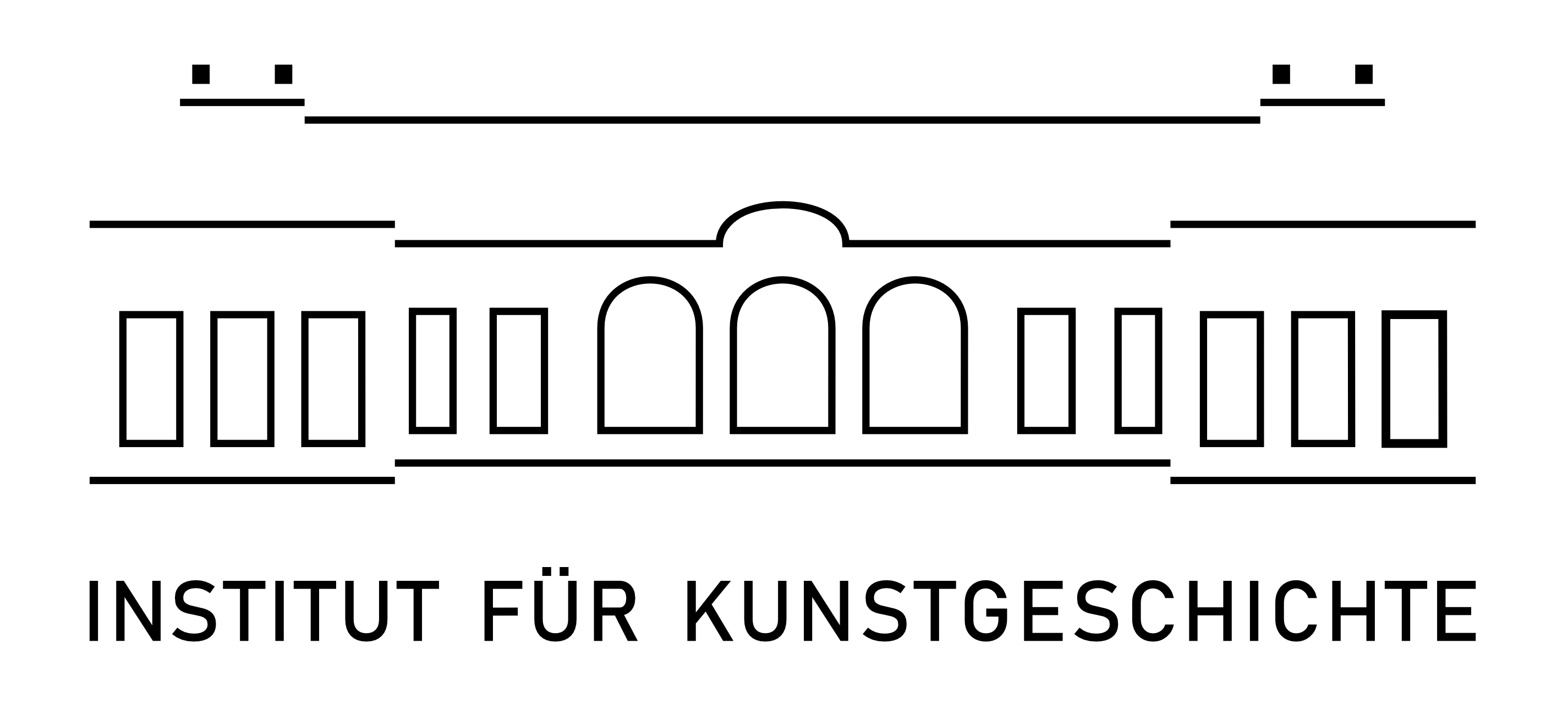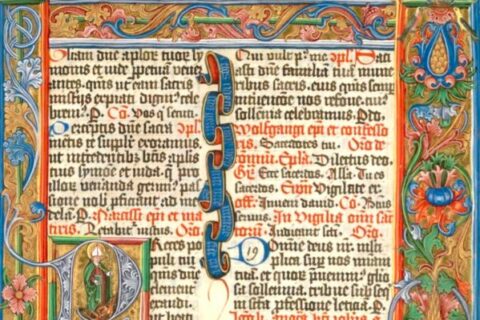Tagung „Illuminated Cuttings“, Germanisches Nationalmuseum Nürnberg
Illuminated Cuttings
im Germanischen Nationalmuseum Nürnberg:
Fallstudien und internationale Recherchemöglichkeit
29. April 2024
Germanisches Nationalmuseum, Konferenzraum, Kornmarkt 1, Nuremberg
30. April 2024
Germanisches Nationalmuseum, Studiensaal, Kornmarkt 1, Nuremberg
Unter den Sammlungsobjekten der Graphischen Sammlung des Germanischen Nationalmuseums in Nürnberg (GNM) befindet sich ein großer Bestand an Miniaturmalereien aus dem 9. bis 18. Jahrhundert, der aus Einzelseiten, Initialen und Zierrahmen besteht, die aus deutschen, böhmischen, flämischen, französischen und italienischen Manuskripten herausgeschnitten wurden. Der Status dieser Miniaturmalereien änderte sich abhängig von Raum und Zeit: Sie waren zunächst Bestandteil mittelalterlicher Manuskripte, wurden dann als Kuriositäten ausgeschnitten und gesammelt, Ende des 18. Jahrhunderts als Beispiel für eine verlorene primitive Kunst wiederentdeckt, im Rahmen der Arts & Craft-Bewegung als Vorbild für modernes Produktdesign reproduziert, und schließlich zum Forschungsgegenstand verschiedener akademischer Disziplinen.
29. April: Das Symposium wird ein internationales Team von Wissenschaftlern und Kuratoren zusammenbringen: Die einzelnen Beiträge der Vortragenden werden dabei einen Einblick in die Geschichte dieser Miniaturfragmente geben und dabei deren Sammlungsgeschichte, ihren Stil, ihre Abhängigkeit von der monumentalen Malerei und verschiedene weitere Aspekte hinsichtlich ihrer materiellen Produktion (Sektion I und II) sowie Perspektiven ihrer Katalogisierung im Kontext von internationalen Digitalisierungs- und Datenbankprojekten erhellen (Sektion III).
30. April: Während des Vormittags haben die Konferenzteilnehmer die Möglichkeit, die Miniaturen im Studiensaal des Germanischen Nationalmuseums zu untersuchen. Besonderes Augenmerk wird auf den illuminierten Fragmenten liegen, die von den Konferenzteilnehmern am Vortag präsentiert wurden, um Diskussionen über Stil und Provenienz weiter zu vertiefen.
English version:
Among the holdings of the Cabinet of Prints of the Germanisches Nationalmuseum (GNM) in Nuremberg is a major collection of illuminated cuttings, consisting of pages, initials, and ornamental borders, excised from German, Bohemian, Flemish, French, and Italian manuscripts from the 9th to 16th century. Their status changed in both time and space from Middle to Modern Age: they went from being part of a book to being cut out and collected as Curiosities, then becoming ‘Monuments’ of lost primitive Art, or models in the wake of the Art & Crafts Movement, of the new reproduction technologies and academic disciplines.
29 April: The symposium will bring together an international team of scholars and curators: session I and session II will offer an insight into the fragments at the GNM, exploring their history, style, the relationship with Monumental Arts, and different topics related to their material production; session III will be devoted to on-going Projects of Cataloguing collections of German Miniatures, discussing cataloguing perspectives in connection with international databases.
30 April: During the morning, the conference attendees will have the opportunity to examine the miniatures in the Studiensaal of the Germanisches Nationalmuseum. Special emphasis will be placed on the Illuminated fragments presented by the scholars the previous day, further encouraging discussion about their style and provenances.
Programm
29 April 2024
Germanisches Nationalmuseum, Konferenzraum, Kornmarkt 1, Nuremberg
9.00–9.10
Welcome
9.10–9.20
Introduction:
Hans von und zu Aufsess and the Birth of the Kupferstichkabinett, Germanisches Nationalmuseum.
Christian Rümelin (Graphische Sammlung, Germanisches Nationalmuseum, Nürnberg)
SESSION 1: Working with Italian, Flemish, and Bohemian Illuminated Cuttings at the GNM
Chair: Francesca Manzari (Sapienza Università di Roma)
9.20–9.40
Some observations on the „Bohemian“ fragments of the GNM in Nuremberg.
Maria Theisen (Österreichische Akademie der Wissenschaften, Institut für Mittelalterforschung / Abt. Schrift- und Buchwesen)
9.40–10.00
Discovering the Italian Fragments Collection at the GNM.
Beatrice Alai (Friedrich-Alexander-Universität Erlangen-Nürnberg)
10.00–10.20
Scattered Leaves: The Hastière Bible as a case-study.
Peter Kidd (Peter Selley Fellow, Bodleian Library, Oxford)
10.20–10.50
Discussion + Coffee break
SESSION 2: Working with German Cuttings at the GNM
Chair: Christine Beier (Universität Wien)
10.50–11.10
Alte und neue Bekannte: Wiedersehen mit Fragmenten des Spätmittelalters aus Mitteleuropa im Germanischen Nationalmuseums in Nürnberg.
Regina Cermann (Österreichische Akademie der Wissenschaften Institut für Mittelalterforschung / Abt. Schrift- und Buchwesen)
11.10–11.30
Little-known Cuttings at the GNM and Their Siblings: New Insights into Manuscript Illumination at the Turn of the 16th Century from the Rhenish Lowlands.
James Marrow (Professor Emeritus, Princeton University)
11.30–11.50
The Birth of God in the Soul in Newly Discovered Devotional Drawings from St. Walburg in Eichstätt.
Jeffrey Hamburger (Harvard University, Cambridge, MA)
11.50–13.40
Discussion + Light Lunch Break
SESSION 3: Cataloguing collections of German Miniatures: on-going Projects in Germany, and international experiences
Chair: Martin Roland (Österreichische Akademie der Wissenschaften, Institut für Mittelalterforschung / Abt. Schrift- und Buchwesen)
13.40–14.00
The collection of manuscript fragments and cuttings of the „Deutsches Buch- und Schriftmuseum“ in Leipzig – Workshop report: results and open questions.
Matthias Eifler (Universitätsbibliothek, Leipzig)
14.00–14.20
Making manuscript fragments in museum collections online accessible: Web portals for the presentation of the European manuscript heritage.
Christoph Mackert (Universitätsbibliothek, Leipzig)
14.20–14.40
Fragmentarium und das GNM. Die Möglichkeiten der digitalen Katalogisierung.
Marina Bernasconi Reusser (Fragmentarium)
14.40–15.00
Display Scripts and how to Describe them.
Christine Jakobi-Mirwald (Independent Scholar)
15.00–15.20
Framing the gaze: some thoughts on Illuminated manuscript cuttings in a museum context.
Catherine Yvard (V&A Museum)
15.20–16.30
Discussion + Coffee break
Keynote lecture:
16.30–17.30
Painting and Illumination in Nürnberg in the time of Albrecht Dürer’s artistic formation. The activity of Hans Traut as illuminator in the light of five recently rediscovered fragments from a broken – up missal.
Gaudenz Freuler (Universität Zürich)
30 April 2024
Germanisches Nationalmuseum, Studiensaal, Kornmarkt 1, Nuremberg
9.30–11.30
Round-table discussion with the miniatures in the Studiensaal (with Christian Rümelin)
12.00
Conclusion
Organisation und Kontakt

